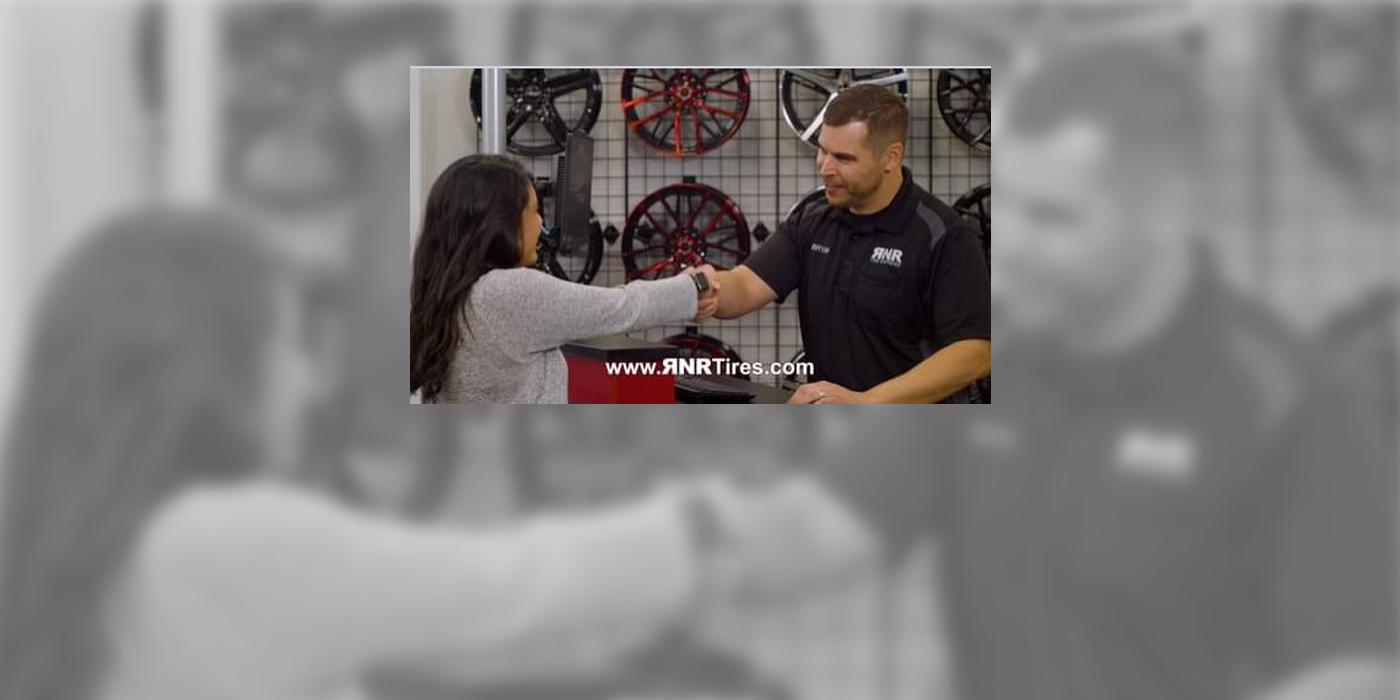In the November 2011 issue of Tire Review, I wrote about how Amazon.com has become a world-class customer service organization by properly balancing the functional and emotional elements of the customer experience (to review, click here).
In this issue, we’ll explore emotional engagement further and review what you need to do in order to create it in your business.
Let’s start with an important question: Why do customers leave companies?
Over the years, this same question has been asked in several consumer research surveys by the American Society for Quality Control, Harvard Business Review, U.S. News & World Report and other reputable organizations. Although each survey was conducted independently, remarkably, all concluded with nearly identical responses from participants:
• 1% of customers leave because they die
• 3% of customers leave because they move away
• 5% of customers leave because a friend influenced them to go elsewhere
• 9% of customers leave because they are lured away by competition
• 14% of customers leave because they are disappointed with the product/service
• 68% of customers leave because of the company’s indifferent attitude toward them
That means 68% of customers leave because they do not think the company truly cares for them. Or, to put it another way, they are not emotionally engaged with the business.
Emotional Engagement
Buying is primarily an emotional experience, and customer loyalty is driven by emotional engagement.
Harley-Davidson represents a great case study of how emotional engagement creates loyalty to a brand. Consumer research has shown that more than 90% of Harley owners would buy another and would also enthusiastically recommend the brand to a friend.
To achieve this, Harley-Davidson makes a very conscious effort when it comes to the style and sound of its motorcycles, and also with the customers’ experiences with the brand itself by promoting a free spirit lifestyle and sense of community between Harley owners.
As for emotional engagement, how many of your customers have a tattoo of your company logo proudly displayed on their body?
The practice of emotionally engaging customers has been going on in the real estate business for some time now. In real estate, the process of setting a house up so it is most appealing to potential buyers is called “staging.” When a real estate agent stages a house, he or she makes sure the environment is Martha Stewart picturesque, with everything tidy and inviting.
There’s no clutter and everything looks shiny and clean. The lighting is set just so – not too bright or too dim – and it’s not unusual for fresh baked cookies or an apple pie to have just come out of the oven with the pleasant aroma wafting about.
None of this is by accident, and all of it is designed to connect with potential buyers emotionally and make them feel a certain way (very pleased) with the product.
Functional vs. Emotional
Whether face-to-face or on the phone, every customer-employee interaction has two elements: a functional element and an emotional element. The functional elements represent the business/transaction side of our customer interactions. The emotional elements are the people/relationship side.
Although functional components are a necessary part of customer interactions, it is the emotional aspects that create and build relationships with customers – and create lasting loyalty to your company’s brand.
Tire and auto service businesses can learn a lot about succeeding in the retail arena by looking at the tremendous success of high-end clothing business Mitchells/Richards/Marshs based in Westport, Conn. At approximately $65 million in sales, the business is outpacing the national average for specialty retailers by an amazing 400%.
The secret to its success, according to company CEO Jack Mitchell, is that everyone in the company is trained to “hug” customers. In this case, a “hug” is not a physical embrace, but rather the employees connecting with customers on an emotional level.
As documented in the book “Hug Your Customers,” associates at Mitchells/Richards/Marshs learn customers’ functional needs and desires – such as clothing sizes and style preferences – but they also take the time to learn customers’ emotional elements, as well: names of spouses, children and pets, as well as professional and personal interests and activities. All emotional content discovered is maintained in the company’s computer system, enabling associates to refer to the data in future customer interactions.
Mitchell credits this emphasis on making and managing personal connections – rather than business transactions – as the key to the company’s exceptional success.
All too often in tire businesses, I witness salespeople meeting the customers’ functional needs while doing relatively little to uncover and satisfy their emotional needs.
For instance, I’ve listened to countless salesperson/customer phone calls where the salesperson is quick to offer all sorts of functional information – tire features and applications, warranties and price guarantees, the special discount of the month, company history, and on and on. The most fascinating thing is in the majority of these cases, the salesperson often neglects the most fundamental of all emotional connections – the name of the caller!
The detrimental situation starts with the salesperson’s initial greeting. Typically, it sounds like this: “ABC Tire, Steve speaking, how can I help you?” This sounds pleasant enough – but the problem is, when asked this, most callers respond with something like, “Yeah hi, I got a 2004 Nissan Maxima and I have a couple tires that need to be replaced. I want to get some prices.”
Next, the salesperson says, “Sure, let me look that up for you…” and takes off down the functional highway, looking up facts and figures, never to return to approach even the most basic of emotional connections.
To remedy this, I highly recommend this greeting: “Hello, ABC Tire, this is Steve. Who am I speaking with today?” Provided the salesperson has the proper friendly tonality and does not somehow sound threatening, most all callers say something like, “This is Sally Sue.” Then the salesperson can instantly make an emotional connection by responding, “Hi, Sally Sue, how can I help you today?”
It’s important to recognize and remember there are only two types of people who call (or come into) your business: first-time or returning customers. Each type requires personalized attention when greeted.
After discovering the caller’s name, the salesperson’s next step should always be to ask if they’ve done business with the company before and, if so, thank them for their loyalty as a valued customer. If not, the salesperson should be thanking the caller for their business consideration. This is very important. This simple act of customer appreciation makes the caller feel valued and creates meaningful emotional engagement.
This principle also applies when going out to a customer’s vehicle to determine tire requirements. There are functional reasons and emotional reasons why a salesperson should be doing this. The functional reasons are to look at the door jamb to find the manufacturer’s OE tire size, recommended tire pressure and to check tread depth, inspect vehicle condition, etc.
The emotional reasons are to spend some quality one-on-one time with the customer to build a relationship. While at the vehicle, the savvy salesperson always keeps an eye out for emotional cues that aid in conversation and building rapport: bumper stickers, car seats, pets, trailer hitches, etc.
Beyond the initial functional information discovered during a phone or in-store interaction, when done right every customer interaction should uncover a little more personal (emotional) information about the customer the salesperson can reference during the call – and update the computer records with for future reference after the call. This is where the great customer service companies separate themselves from the merely adequate – by connecting with their customers on this emotional level.
Rules of Emotional Engagement
Every interaction is an opportunity to create emotional engagement, strengthen the customer relationship and enhance the image of the business.
The stronger the customer’s emotional engagement, the less purchases will be about price (intellectual concern) and more about the value perceived in the relationship (emotional connection).
When a customer is emotionally engaged, he or she doesn’t depend on price shopping or discounting.
Keep in mind that emotional engagement must be maintained or it will diminish. This is why it is so important to be consistent in delivering extraordinary customer service during each and every customer interaction.
Exceeding expectations is vital to customer engagement. If all you do is meet customer needs, you’ll lose customers as soon as they find something better. Be something better.
Customer engagement is not something that happens at the corporate office or in the employee handbook. It must be managed at the store level where employees interact with customers.
Steve Ferrante, CEO of Sale Away LLC, is the producer and host of the Pinnacle Performance sales and customer service training program for the tire/auto service industry. He can be reached at 866-721-6086 ext. 701 or [email protected].













